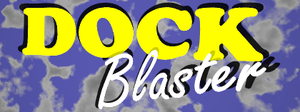DOCK Blaster
DOCK Blaster is a free-to-use service for running docking screens, on the web at http://blaster.docking.org. **DOCK Blaster is currently in beta test, so you should contact John Irwin for access until it becomes public** To use DOCK Blaster you will need at least:
- The structure of the target in PDB format (preferred) or mol2 format
- A specification of the binding site, which may be one of:
- A docked ligand in mol2 format, which is also used to test the docking parameterization
- "hot spots", in PDB format, which may be based on one or more ligands.
- Atoms of residues forming the binding site. The center of inertia of these atoms should coincide with where you expect the ligand to go.
That's really all you need to get started. If the target you wish to screen is already in the PDB, you may simply specify its PDB code, and DOCK Blaster will attempt to do the rest.
If you do not have a particular project in mind, and you are just curious about DOCK Blaster, you can simply use the "I'm feeling lucky" option, and we will pick a target for you.
If you would like to try one of the examples featured in our forthcoming paper, take a look at the sample data to experiment.
To learn more about DOCK Blaster, please consult the topics below.
Before you get started
Preparation and Docking
Understanding the Results
Other information
To cite DOCK Blaster, please reference Huang, Shoichet, Irwin, "Benchmarking Sets for Molecular Docking", J Med Chem 2006, 49(23), 6789-6801
For help with DOCK Blaster, please join and write to the DOCK Blaster mailing lists [1]. We welcome your feedback about DOCK Blaster. Please send bug reports to support at docking.org. Please send opinions to comments at docking.org.
